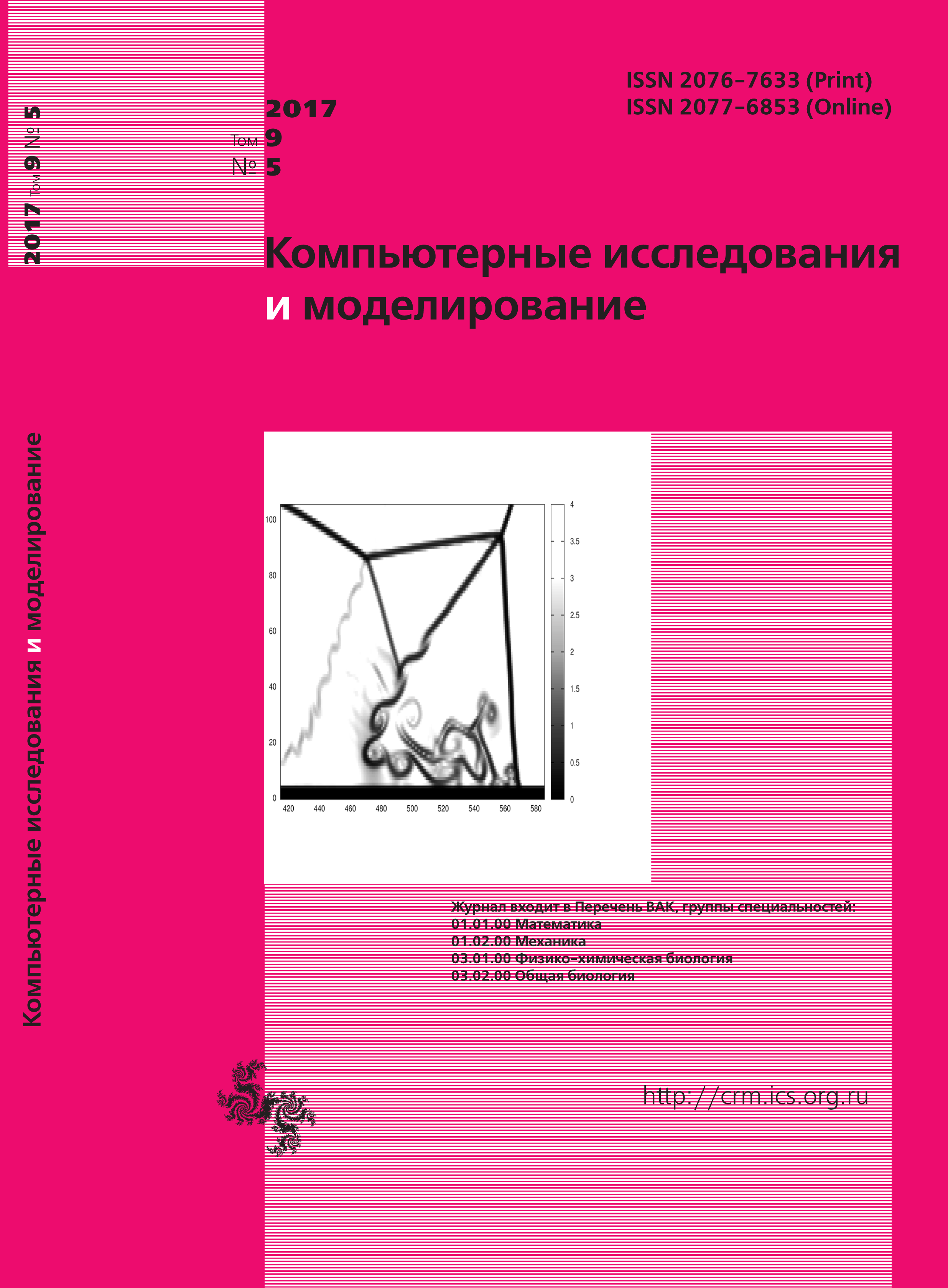All issues
- 2024 Vol. 16
- Issue 1 (special issue)
- 2023 Vol. 15
- 2022 Vol. 14
- 2021 Vol. 13
- 2020 Vol. 12
- 2019 Vol. 11
- 2018 Vol. 10
- 2017 Vol. 9
- 2016 Vol. 8
- 2015 Vol. 7
- 2014 Vol. 6
- 2013 Vol. 5
- 2012 Vol. 4
- 2011 Vol. 3
- 2010 Vol. 2
- 2009 Vol. 1
Optimal control of the motion in an ideal fluid of a screw-shaped body with internal rotors
In this paper we consider the controlled motion of a helical body with three blades in an ideal fluid, which is executed by rotating three internal rotors. We set the problem of selecting control actions, which ensure the motion of the body near the predetermined trajectory. To determine controls that guarantee motion near the given curve, we propose methods based on the application of hybrid genetic algorithms (genetic algorithms with real encoding and with additional learning of the leader of the population by a gradient method) and artificial neural networks. The correctness of the operation of the proposed numerical methods is estimated using previously obtained differential equations, which define the law of changing the control actions for the predetermined trajectory.
In the approach based on hybrid genetic algorithms, the initial problem of minimizing the integral functional reduces to minimizing the function of many variables. The given time interval is broken up into small elements, on each of which the control actions are approximated by Lagrangian polynomials of order 2 and 3. When appropriately adjusted, the hybrid genetic algorithms reproduce a solution close to exact. However, the cost of calculation of 1 second of the physical process is about 300 seconds of processor time.
To increase the speed of calculation of control actions, we propose an algorithm based on artificial neural networks. As the input signal the neural network takes the components of the required displacement vector. The node values of the Lagrangian polynomials which approximately describe the control actions return as output signals . The neural network is taught by the well-known back-propagation method. The learning sample is generated using the approach based on hybrid genetic algorithms. The calculation of 1 second of the physical process by means of the neural network requires about 0.004 seconds of processor time, that is, 6 orders faster than the hybrid genetic algorithm. The control calculated by means of the artificial neural network differs from exact control. However, in spite of this difference, it ensures that the predetermined trajectory is followed exactly.
Indexed in Scopus
Full-text version of the journal is also available on the web site of the scientific electronic library eLIBRARY.RU
The journal is included in the Russian Science Citation Index
The journal is included in the RSCI
International Interdisciplinary Conference "Mathematics. Computing. Education"







